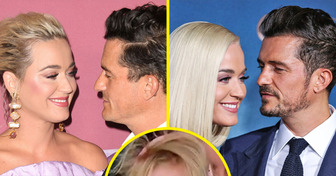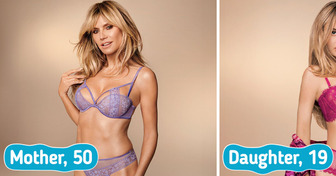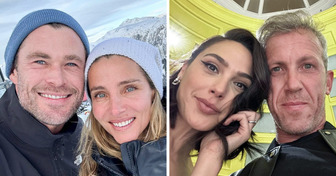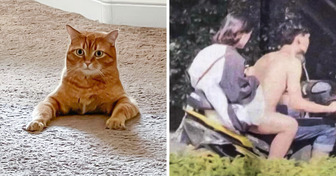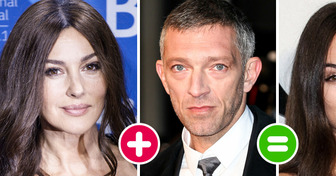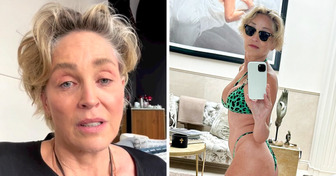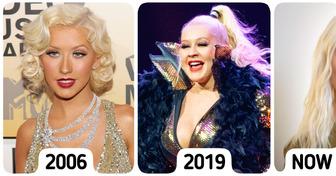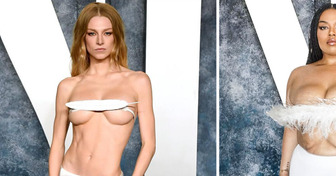15 People Have Shared Scary Stories That Happened to Them in Real Life and Gave Us Goosebumps

When we think of Disney princesses, we can’t help but think of their signature gowns. But while we’re used to seeing Belle in her yellow gown when she dances with the Beast, the reality is that fashion in the 18th century had nothing to do with what we see on screen. That’s why we asked an AI to design the correct versions of these characters’ dresses, and now we’re sharing the results with you.
The original story, published in 1937, was inspired by Margaretha von Waldeck, a German countess born in 1533, suggesting that the story is set in that time period.
Unlike the dress shown by the Disney animators, women in the 15th century wore much more extravagant, high-waisted garments with layers of linen underneath. Another major difference from the Disney design is the sleeves. In reality, women’s garments had detachable long sleeves that flared at the shoulders.
The most famous version of this story is attributed to Charles Perrault in his book Histoires ou contes du temps passé, published in 1697. However, there are records of the story from several centuries ago, between 1330 and 1344, in the Perceforest. Therefore, it could be said that the protagonist lived at that time.
At that time, women wore dresses that were rather tight to the silhouette. They did not want to widen their hips with wide skirts. On the contrary, dressmakers of the time tried to avoid adding volume to this area as much as possible. Instead, the more formal models wore long trains. In addition, it was common for gowns to be worn on top of the dress, falling over the shoulders in a layered fashion.
The Brothers Grimm published the most famous version of this story in 1812 in their collectionrimms’ Fairy Tales. However, the 7th century B.C. and the 1st century A.D. are the oldest records of this story.
Thanks to the Brothers Grimm, Cinderella will always be remembered as a traditional German fairy tale. Let’s take a look at how Cinderella looked in the 19th century. Dresses began to become more extravagant and theatrical, a trend which continued until Romanticism ended.
Originally, Aladdin is one of the best-known stories in the Arabian Nights. As for the setting of the story, the opening lines of the story say, "In some of the cities of China. However, such a setting is not mentioned again in the rest of the story, and some elements may suggest that Aladdin’s story takes place somewhere in the ancient Middle East.
It is also worth noting that the story was included in the book thanks to the Syrian writer Hanna Diyab, and in ancient Arabic, the term “China” was used to refer to distant and exotic lands. For this reason, and to follow the traditional depiction of the story, we will describe what Jasmine’s clothing would have looked like in the ancient Near East.
Clothing in this region has evolved very little over the years, as its purpose remains the same: to protect from the harsh climate and sand. As a result, the differences between countries are quite subtle.
The basic garment was a shirt with sleeves, loose pants and a tunic. Then the jellaba was added. This is a dress with long sleeves and a skirt with slits on the sides. All this is mostly in cream colors and embroidered with bright fabrics.
The original story is German. It was officially published by the Brothers Grimm in 1812, and they took the idea from the country’s oral tradition. However, Disney’s 2009 adaptation is a special case. It is loosely based on The Frog Princess, an adaptation of the original story published by E. D. Baker in 2002.
Since this is a story with such obvious changes from the original tale, we will describe what Tiana’s clothing would have looked like in the 1920s and in the United States, according to the Disney adaptation.
Fashion at that time was evolving against previous trends. It was all about “letting go,” so dresses were loose and low-cut. They barely showed the woman’s silhouette and reached almost to the ankles, sometimes to the knees.
Disney used the story La Belle et la Bête, written by French novelist Gabrielle-Suzanne Barbot de Villeneuve in 1740, as the basis for one of its most famous animated classics. One would think that the story is set in the same time period in which it was written. Then Bella would have had to wear very different clothes, according to the French fashion of the 18th century.
A typical feature of the dresses of that time was the fitted bodice. They had square necklines, large ribboned bows, and front lace and flowers. Pastel colors were used to create an elegant and youthful look. The sleeves were flared and ended at the elbows. This allowed the sleeves of the nightgown worn under the dress to be seen.
Brave is an original Pixar story released in 2012, set in medieval Scotland. The costumes Merida wears in the movie are much more realistic than those worn by other Disney Princesses. However, some elements of medieval European fashion are not shown.
For instance, women’s clothing at the time usually included tunics. On the outside, a long cloak could be worn as a coat, attached to the inner garment with a belt at the waist. In addition, socks may have been worn on the legs and veils on the head.
Tangled, released in 2010, is based on the story of Rapunzel, published by the Brothers Grimm in 1812, which in turn is based on the French story of Persinette, written by Charlotte-Rose de Caumont de La Force in 1698.
Thus, the story of the lost princess is set in Germany at the end of the 17th century. At that time, women wore low-cut corsets, wide at the shoulders and narrow at the waist. The sleeves were wide and loose and ended at the elbow, while the skirt reached down to the feet. Over time, however, the length of the skirt was shortened to reveal the petticoat.
Hercules revolves around the adventures of the Greek demigod. Although it’s not explicitly stated that it takes place in ancient Greece, it can be inferred from certain things mentioned throughout the movie.
Greek women of the time wore relatively simple and loose clothing. Their primary purpose was functional, so they did not attempt to confer identity. Their clothing consisted of two pieces: an undergarment and a cloak. The main difference between women’s and men’s clothing was that women’s tunics reached to the ankles, while men’s only reached to the knees.
The colors were often neutral, but tailors would add decorative borders in bright colors. The latter, however, was only common among the upper classes. Purple, in particular, was considered the most conspicuous sign of wealth in clothing because of its price.
Frozen is loosely based on the fairy tale The Snow Queen, which was published in 1844 by the Danish author Hans Christian Andersen. Since the kingdom of Arendelle is fictional, the source of inspiration for Disney’s story may have been set in the 19th century, somewhere in Europe.
Assuming that this analysis is correct, Elsa must have had a style similar to that of Cinderella, since the fashions of the European countries did not vary very much. In this sense, she must have had a much more defined structure, a wide skirt, and extravagant decorations..
Ariel, the spirited and adventurous mermaid princess from Disney’s classic animated film, steps out in style, wearing a historically accurate ensemble from the 1890s. The elegant gown is made of a rich emerald green satin, paying homage to her signature color. The bodice is adorned with intricate lace detailing and features the iconic leg-o-mutton sleeves popular during that era. The high-collared neckline adds a touch of sophistication and modesty to her look. A matching velvet sash cinches her waist, giving the gown a flattering silhouette.
The voluminous skirt cascades down to the floor, creating a graceful and flowing movement as Ariel walks. Completing her ensemble, she wears her fiery red hair swept up in a classic Gibson Girl hairstyle, emphasizing her natural beauty and charm. With this historically accurate costume, Ariel captures the essence of the 1890s while retaining her unique personality and charm.
But wait! Have you ever wondered what these Disney princesses would look like if they weren’t so darn nice? In our next article, we’ll be transforming our favorite princesses into villainous fashionistas! Get ready for some evil makeovers!


